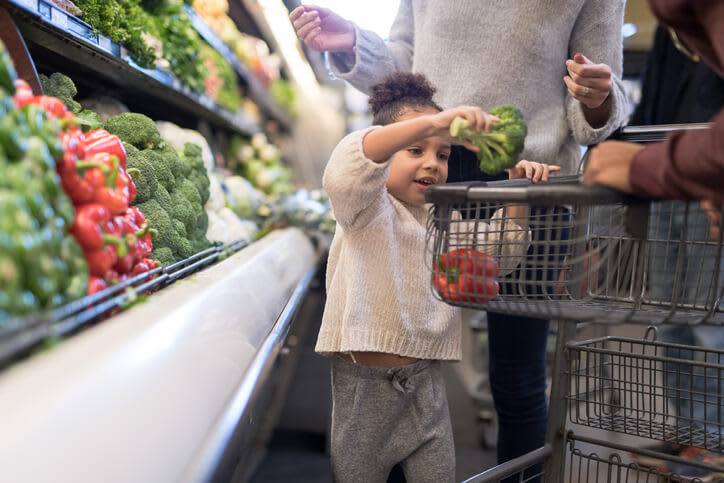Supplemental Nutrition Assistance Program: Food Stamps Eligibility and Benefits
- SNAP, also known as food stamps, is a critical social services program in the United States for individuals and families. Find out important information about SNAP and how it works.

The first purchase of groceries using food stamps in the United States took place in Rochester, NY, in 1939, at the end of the Great Depression.
The country's original food stamp initiative provided people on public assistance with stamps they could redeem for items such as eggs and fruit. This program ended in 1943 but became a model for other food assistance programs.
Today, the food stamps program is known as the Supplemental Nutrition Assistance Program (SNAP) and is a key social services program in the United States.
In 2019 — 80 years after the first food stamps were used — more than 35.7 million Americans received SNAP benefits to put healthy, nutritious food on their tables. The program is delivered in all 50 states and the District of Columbia.
Here's a closer look at SNAP and how the program works.
Purpose of the Supplemental Nutrition Assistance Program
SNAP is a program of the U.S. Department of Agriculture (USDA), specifically the Food and Nutrition Service, which is responsible for increasing food security. According to the USDA, 89% of Americans were food secure in 2018 and 11% were food insecure.
Food insecurity is a way of measuring how many Americans are impacted by hunger. Households that are food insecure have trouble getting enough nutritious food for its members to live a healthy life, and may have a diet that has:
- Reduced variety of foods
- Less nutritious foods
- Reduced food intake
- Disrupted eating patterns, such as skipping meals
The discrepancy in access to food is significant. Households that are food secure typically spend 21% more on groceries than food-insecure households of the same size and composition, even when SNAP benefits are used.
How SNAP Works
SNAP is the federal government's most used food assistance program. In 2019, the United States spent $55.6 billion on SNAP benefits so that low-income individuals and families could buy nutritious food.
About 92% of the benefits flowed to households at or below the poverty line. These homes must often choose between buying groceries and paying for other expenses, such as medicine.
How Much Are SNAP Benefits?
Benefits are calculated based on a household's net monthly income and household size. In 2019, the average benefit per person was $129.83 per month.
SNAP recipients are expected to spend about one-third of their own resources on food.
Electronic Benefits Transfer Cards
Physical food stamps have been replaced by plastic Electronic Benefits Transfer (EBT) cards in all states since 2004. Benefits are loaded onto the card which can then be used to purchase groceries at authorized stores.
The EBT card works like a debit card and is inserted into a card reader at checkout. The amount of the purchase is deducted from your SNAP account.
Unused SNAP benefits carry over into the next month, but EBT cards that haven't been used for one year will have the balance permanently removed.
Eligibility for Food Assistance Through SNAP
Eligibility for SNAP is based on a household's gross income, net income and assets. There are special guidelines for households with adults over the age of 60 or persons with disabilities.
SNAP income limits are reviewed and updated each year, so check the USDA website or contact your local SNAP agency for updated information.
Applying for SNAP
Each state has its own application form for SNAP benefits, so you must apply in the state in which you currently live. Applications are usually reviewed within 30 days and include a telephone or in-person interview.
If you're eligible, you receive benefits as of the date your application was submitted. You must recertify periodically to maintain your benefits.
What Can You Buy With SNAP Benefits?
One of the challenges of low-income households is accessing nutritious food for preparing meals. Packaged and processed foods are often cheaper but are low in essential nutrients and high in calories, increasing the risk of malnutrition and health complications in adults and children.
SNAP benefits are intended to help food-insecure households access a variety of healthy foods to meet recommended dietary guidelines.
SNAP benefits can be used to purchase groceries such as:
- Fresh, frozen and canned fruits and vegetables
- Fresh or frozen meat, poultry and fish
- Milk, eggs, yogurt and dairy products
- Bread, cereal, pasta and rice
- Snack foods and non-alcoholic beverages
Households that want to grow their own food can also use SNAP to buy seeds and plants for a garden.
Can You Buy Alcohol With SNAP Benefits?
Alcohol such as beer, wine and liquor are not eligible for purchase with SNAP benefits.
Other ineligible items include:
- Cigarettes and tobacco
- Cleaning and household supplies
- Cosmetics and personal hygiene items
- Pet food
Where Can EBT Cards Be Used?
SNAP benefits can be used at certain authorized retailers including supermarkets, super stores and convenience stores. To promote access to fresh, locally grown foods, some farmers markets accept EBT cards, although only 0.03% of benefits were spent at these markets in 2019.
A two-year pilot project was launched in New York in 2019 to explore the feasibility of using EBT cards for online food shopping.
Additional Resources
For more information or to apply for SNAP, contact your local state office. You can learn more about other federal government food assistance programs here.